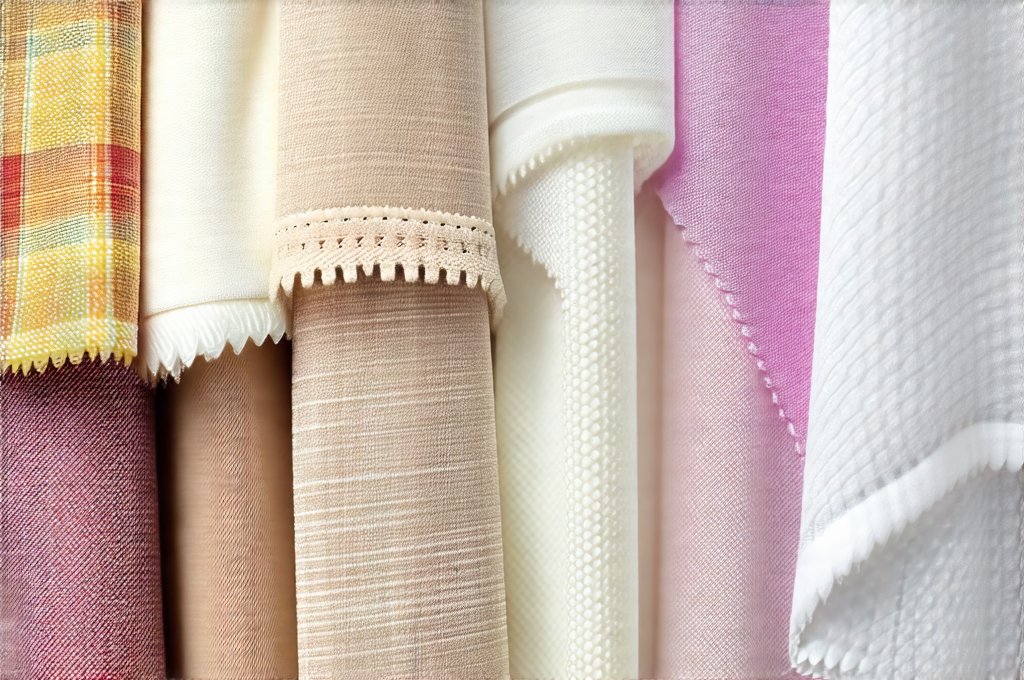Many people experience discomfort from clothing, but it’s often dismissed as simply being “sensitive” or having “itchy” skin. However, this isn’t always about individual sensitivity; the fabrics themselves can play a significant role. From persistent itching and rashes to more subtle feelings of constriction and overheating, certain materials are demonstrably more likely to trigger discomfort than others. Understanding why this happens involves considering both the inherent properties of different fibers—their texture, breathability, and chemical composition—and how these interact with individual skin types and sensitivities. It’s a complex interplay between material science, personal physiology, and even laundry habits.
The problem isn’t limited to those with diagnosed skin conditions like eczema or psoriasis, though it certainly exacerbates symptoms for them. Even individuals with generally healthy skin can react negatively to certain fabrics, experiencing irritation due to friction, static cling, or allergic reactions to dyes and finishes used in textile production. Modern clothing manufacturing often prioritizes cost and durability over comfort, leading to the widespread use of synthetic materials that lack the natural breathability and softness of traditional fibers. This creates a growing need for awareness about fabric choices and their potential impact on well-being, moving beyond simply choosing what looks good to considering how it feels against the skin.
Understanding Fabric & Discomfort Triggers
The root causes of fabric-related discomfort are multifaceted. It isn’t always an allergy, though that’s a significant factor for some. More commonly, discomfort arises from physical properties of the fabric itself. Rough textures can cause friction leading to irritation and even micro-abrasions on the skin, particularly in sensitive areas like underarms or where clothing rubs against the thighs. Synthetic fabrics, while often durable and inexpensive, frequently lack breathability. This traps heat and moisture against the skin creating an environment conducive to itchiness, chafing, and potentially even fungal growth. The way a fabric is finished – treated with dyes, wrinkle-resistant chemicals, or water repellents – can also contribute to problems. Many of these finishes contain residues that irritate sensitive skin.
Furthermore, static cling, common in synthetic materials like polyester and nylon, can be intensely irritating for some individuals. This isn’t just a nuisance; the constant small electrical shocks create a persistent sensory experience that feels unpleasant. Even seemingly innocuous things like seams and labels can become sources of discomfort if they are scratchy or positioned in areas where they rub against the skin. The weave of the fabric also plays a role – tightly woven fabrics restrict airflow more than loose weaves, while textured weaves (like corduroy) have more surface area for friction.
Finally, individual skin sensitivity varies dramatically. Those with eczema, psoriasis, or other skin conditions are naturally more prone to reactions, but even those without diagnosed conditions can develop sensitivities over time, perhaps after repeated exposure to irritating fabrics or harsh detergents. Identifying the specific trigger—whether it’s a particular fiber, finish, or weave—is key to managing fabric-related discomfort. If hormonal imbalances seem connected, consider exploring can female UTIs and their potential impact.
Natural vs. Synthetic Fibers: A Comfort Comparison
Generally speaking, natural fibers tend to be more comfortable than synthetic ones, but even within each category, there’s significant variation. Cotton is often lauded as a comfortable choice due to its softness and breathability. However, conventional cotton can be treated with numerous chemicals during growing and processing which may cause issues for sensitive individuals. Organic cotton minimizes this risk, offering a softer, more natural option. Linen, made from flax fibers, is another excellent choice for warm weather; it’s highly breathable and becomes softer with each wash. Wool, particularly merino wool, offers exceptional warmth and breathability but can be itchy for some due to its scale-like surface structure – though finer grades of merino are less likely to cause irritation. Silk is luxurious and gentle on the skin, known for its smooth texture and hypoallergenic properties.
Synthetic fibers, like polyester, nylon, acrylic, and rayon, typically offer advantages in terms of durability, wrinkle resistance, and cost. However, they often lack the breathability and moisture-wicking properties of natural fibers. Polyester and nylon are particularly prone to trapping heat and moisture against the skin, leading to irritation. Rayon is somewhat more breathable but can shrink easily and may contain residual chemicals from processing. Microfibers – extremely fine synthetic fibers – have become popular in clothing for their softness and drape, but they still don’t offer the same level of comfort as natural alternatives. Furthermore, microfiber shedding contributes to microplastic pollution which is an environmental concern. The key difference often lies in how these fibers are treated during manufacturing.
Identifying Your Fabric Sensitivities
Determining what fabrics cause you discomfort requires a bit of detective work and careful observation. Start by keeping a “fabric diary” – note what you’re wearing, when you experience discomfort (itchiness, rash, redness), and any other relevant factors like temperature or activity level. This will help you identify patterns and pinpoint potential triggers.
- Elimination Diet for Clothing: Try removing one fabric type at a time from your wardrobe to see if symptoms improve. For example, switch from polyester athletic wear to cotton or merino wool alternatives.
- Pay Attention to Finishes: Be mindful of clothing labeled “wrinkle-free,” “water repellent,” or “stain resistant” as these often contain irritating chemicals. Look for garments made with natural dyes and minimal finishing treatments.
- Wash Before Wearing: Always wash new clothes before wearing them, even if they appear soft. This removes excess dye, finishes, and manufacturing residues that can cause irritation. Use a fragrance-free, hypoallergenic laundry detergent. If you suspect your discomfort is connected to bladder issues, it’s useful to understand can perimenopause trigger these concerns.
The Role of Laundry Detergents & Softeners
Even if you choose comfortable fabrics, improper laundering can negate their benefits. Harsh detergents containing sulfates, fragrances, or dyes can leave behind residues on clothing that irritate skin. Opt for fragrance-free, hypoallergenic laundry detergents specifically designed for sensitive skin. Liquid detergents generally rinse more thoroughly than powder detergents, reducing the risk of residue buildup.
- Skip Fabric Softeners: Fabric softeners coat fibers with a chemical film that reduces breathability and can actually increase irritation. Instead, consider using dryer balls to soften clothes naturally and reduce static cling.
- Double Rinse: Running an extra rinse cycle during washing helps remove any lingering detergent residue.
- Vinegar as a Natural Softener: A small amount of white vinegar (about 1/4 cup) added to the final rinse cycle can act as a natural fabric softener and help neutralize odors.
Choosing Comfortable Alternatives & Minimizing Irritation
Once you’ve identified your triggers, focus on choosing comfortable alternatives. Prioritize natural fibers like organic cotton, linen, silk, and merino wool. If synthetic fabrics are unavoidable, look for options with minimal finishing treatments and choose looser weaves that allow for better airflow. Consider clothing designed specifically for sensitive skin, which often uses hypoallergenic materials and avoids harsh dyes and finishes.
- Layering: Layering natural fiber base layers under synthetic outerwear can help create a breathable barrier between your skin and irritating fabrics.
- Seamless Clothing: Seamless garments minimize friction points and reduce the risk of chafing, particularly in areas like underarms or where clothing rubs against the thighs.
- Tagless Options: Choose tagless clothing whenever possible to eliminate irritation from scratchy labels. If tags are unavoidable, consider carefully removing them. It is also important to know can certain diets trigger UTIs in women if you’re prone to infections.
Ultimately, finding comfortable clothing is a personal journey that requires experimentation and awareness. By understanding the properties of different fabrics and paying attention to your body’s reactions, you can build a wardrobe that feels good against your skin and supports your overall well-being. Consider also whether can colds trigger bladder issues if you experience frequent discomfort.





















